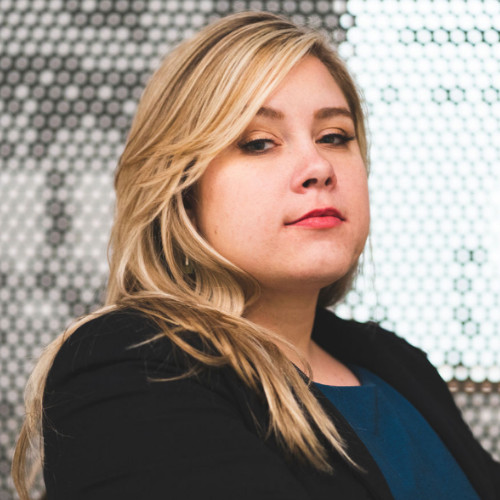
“Content” is one of my least favorite terms.
Maybe it’s because I count myself as a member of “the media” (another amorphous, ill-defined label that stirs me up; why is a conversation for a different article). Perhaps my dislike is rooted in a sort of artistic snobbishness that prefers specificity over catch-alls. Or maybe it’s not the word’s fault, but rather a frustration with content being conflated with more valuable, um, craft? (Yes, I almost just wrote content out of habit.)
Aside from my frustration with the word content, there’s a lot to unpack around content as we understand it in 2022.
In a dual book review for The New Yorker, Kyle Chayka writes about the dynamics of the content industry and how it’s shaped the way creators and consumers live online.
Per Chayka, both Kate Eichorn’s Content and Justin E. H. Smith’s The Internet Is Not What You Think It Is are part of a long line of books written “to take stock of how the Internet is influencing us, and what we should do about it.” However, the latest takes, these included, focus on the “increasingly dysfunctional relationship between lone individual and virtual crowd.”
Eichorn defines content as digital ephemera that “may circulate solely for the purpose of circulating.” She explains that, unlike art or craft, content’s “[g]enre, medium, and format are secondary concerns and, in some owinstances, they seem to disappear entirely.” Content exists to fill our social media feeds and to monetize them. In this context, content is the opposite of art for art’s sake.
How’d We Get Here?
Eichorn traces this back to the introduction of online advertising, for which we can apparently blame Google. Digital ads require content to place around them, and the performance of the content dictates the success of the ad. Therefore, in many ways, “[r]evenue comes not necessarily from the value of content itself but from its ability to attract attention, to get eyeballs on ads.“
Certainly, there are models for pushing back on this reduced value of user-generated content. Patreon and Substack offer ways to pay creators for their work directly. But this, too, requires attention for success, and many still find themselves reliant on social media content to promote their paying work. After all, Chayka writes, in 2022, “the most direct path to success is to cultivate a large digital following.”
Eichorn explains, “Cultural producers who, in the past, may have focused on writing books or producing films or making art must now also spend considerable time producing (or paying someone else to produce) content about themselves and their work,” Eichhorn writes. Enter the rise of Insta-famous poets (think Rupi Kaur, Maggie Smith), pop stars launching via TikTok, and journalists weighing in on everything under the sun on Twitter. LinkedIn offers tools to ease and incentivize UGC on its platform.
‟All are trapped by the daily pressure to produce ancillary content—memes, selfies, shitposts—to fill an endless void, Chayka writes.”
And unfortunately, Justin E.H. Smith thinks the damage doesn’t stop there. He writes, “The more you use the Internet, the more your individuality warps into a brand, and your subjectivity transforms into an algorithmically plottable vector of activity.” Just like Salvador Dalí and Pablo Picasso wanted.
READ MORE: How the Internet Turned Us Into Content Machines (The New Yorker)
I remember attending a journalism conference as a college senior. A major focus was the importance of a personal brand, a relatively novel concept at the time.
Some of the accompanying advice — your email should not read like an AIM screen name; snag the URL for insertyourownname.com and pay to keep it; don’t put anything on social media you wouldn’t want an employer to see — still feels quite sensible more than a decade later. Other maxims feel more like harbingers of burnout: post regularly on social media, especially Twitter, to build a following and define your voice and interests publicly; blog if you ain’t got a job (to ensure you have recent clips).
A lot of that probably sounds innocuous, and on the surface level, it is. But keep in mind that the Internet of 2012 was pre-absolute capitalization of social media. Instagram had neither influencers nor ads. People still primarily used Facebook for interacting with friends and family; many of us still accessed it via a browser not the app. This Internet wasn’t as fast, but it was still fun.
How Creators Feel About the Content Industry?
Roxane Gay is a best-selling writer, professor, social commentator, New York Times contributor, and creator of a popular Substack newsletter, but even she isn’t thrilled with the state of Web 2.5.
“[T]he amount of opportunity in the writing sphere gets smaller and smaller with each year because we live in a culture that, honestly, doesn’t really value writing. It’s unfortunate. Friends and I talk about this all the time,” Gay says on an episode of The Argument podcast. “Like when we post links to our writing, especially writing that isn’t necessarily news cycle-based and isn’t memoir, crickets. Nobody engages with the content on social media. It doesn’t really seem like anyone reads it.
“But then you post some link to some nonsense thing, tens of thousands of likes. And it’s really frustrating, especially when you know, OK, I don’t have to feed the beast anymore. But nobody gives a damn about my little sort of niche interests. It’s hard to resist that sort of clarion call of what to do.”
Gay’s comments were part of a larger conversation centered on writing from outside your culture/identity and why certain things infuriate writing Twitter. Listen to the full episode below.
Social media is a double-edged sword for a lot of creators and small businesses.
Take for example: Emily McDowell, who got famous by becoming a human brand, which is apparently what happens when you name your indie greeting card company after yourself. McDowell had previously worked in advertising and applied her skills to promoting Emily McDowell Studio online, which meant a lot of social media , most of which she handled personally for the better part of a decade.
In an effort to gain some separation from her professional life, McDowell’s brand evolved from Emily McDowell ➡ to Emily McDowell Studio ➡ to Em & Friends, the version created in 2021, when she began the process of stepping back.
McDowell has written on Instagram about the process of distancing herself from her work and the burnout that preceded these transitions. She’s also started a podcast called Quitted, which essentially celebrates the hard work of endings. In episode two, McDowell shares the story of how and why she quit the content machine life.

